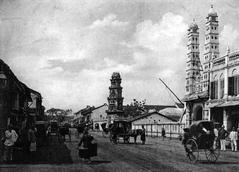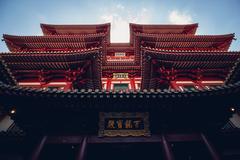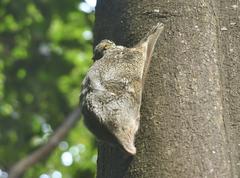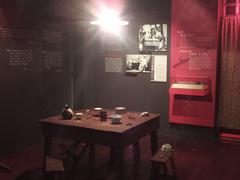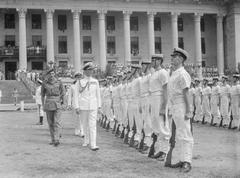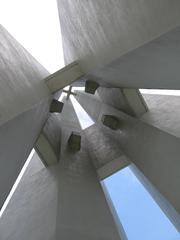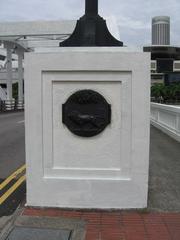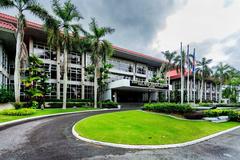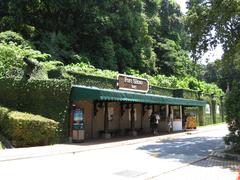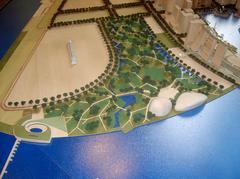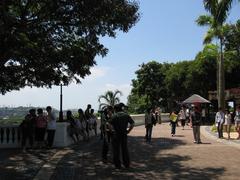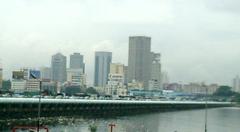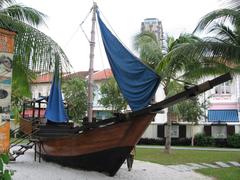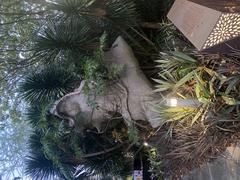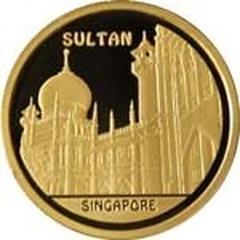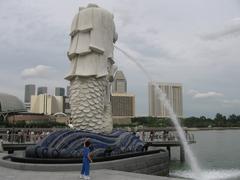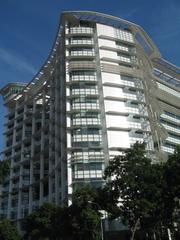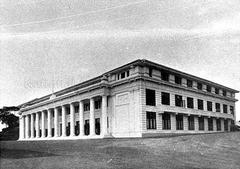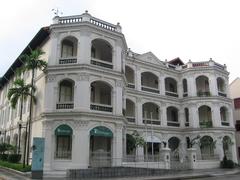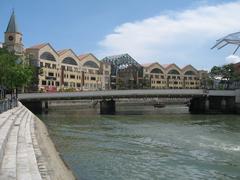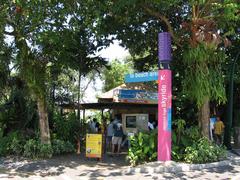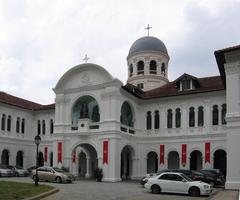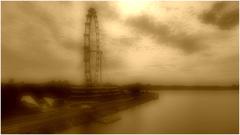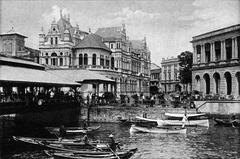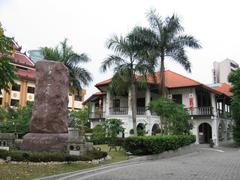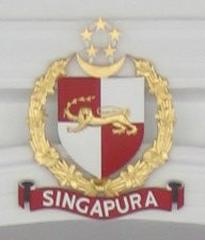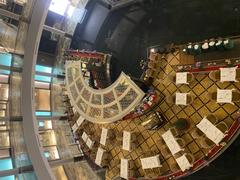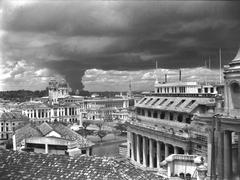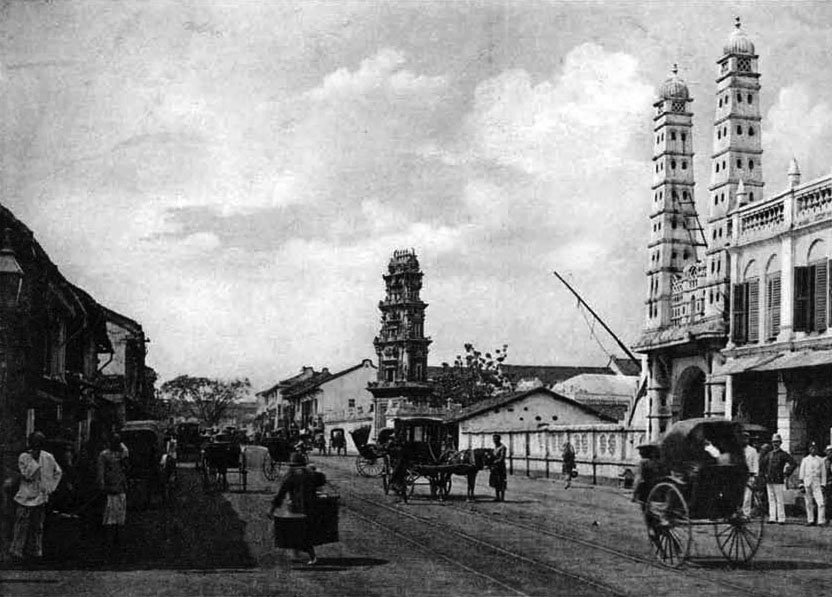
Sri Mariamman Temple Visiting Hours, Tickets, and Historical Significance in Singapore
Date: 14/06/2025
Introduction
Situated in the heart of Singapore’s bustling Chinatown, the Sri Mariamman Temple is not only the city-state’s oldest Hindu temple but also a vibrant emblem of Singapore’s multicultural heritage. Established in 1827 by Naraina Pillai, the temple has grown from a modest wood-and-atap structure into a magnificent showcase of Dravidian architecture, complete with a towering, ornately decorated gopuram and intricate sculptures of Hindu deities and mythological figures (smt.org.sg; lionheartlanders.com). As a living heritage site, it serves as both a spiritual sanctuary and a cultural hub, reflecting the traditions, festivals, and communal life of Singapore’s Hindu community.
Visitors can expect an immersive experience, from admiring the temple’s historic artistry to witnessing vibrant festivals such as Theemithi (the fire-walking festival) and Navarathiri. The temple’s central location near Chinatown MRT station, free admission, and welcoming atmosphere make it easily accessible for all. Whether you are a heritage enthusiast, spiritual seeker, or cultural traveler, this guide provides all essential details about Sri Mariamman Temple’s visiting hours, ticketing, architecture, festivals, and nearby attractions (Singapore Tourism Board; Audiala App).
Table of Contents
- Introduction
- Historical Background and Cultural Significance
- Practical Visitor Information
- Frequently Asked Questions (FAQ)
- Visuals and Media
- Conclusion
- References
Historical Background and Cultural Significance
Origins and Early Development
Sri Mariamman Temple traces its origins to 1827, founded by Naraina Pillai, an influential Indian businessman who arrived in Singapore with Sir Stamford Raffles. The temple was initially built to serve the spiritual needs of Indian immigrants, especially those from Nagapattinam and Cuddalore in South India (smt.org.sg; lionheartlanders.com). Originally a humble structure, it was rebuilt in brick by 1843 to accommodate Singapore’s growing Hindu population (discoverwalks.com).
Architectural Features and Symbolism
The temple is celebrated for its Dravidian architectural style, especially the colorful six-tiered gopuram adorned with detailed sculptures of gods, goddesses, and mythological figures (BiblioAsia). The main sanctum is dedicated to Goddess Mariamman, known for her healing powers, while other shrines honor deities such as Durga, Ganesh, Shiva, and Draupadi. The layout symbolizes Hindu cosmology, with the courtyard representing earth and the gopuram symbolizing the heavens (lionheartlanders.com).
Social and Communal Role
Historically, Sri Mariamman Temple provided shelter to new Indian immigrants and served as the official Registry of Marriages for Hindus in Singapore (discoverwalks.com). Today, it remains a vibrant center for weddings, communal events, and cultural celebrations.
Festivals and Rituals
The temple is renowned for its annual Thimithi (fire-walking) festival, which draws thousands and is one of Singapore’s most dramatic religious events (drivingdirectionssingapore.com). Other key festivals include Navarathiri and Sankabishegam, featuring music, rituals, and communal gatherings. Daily puja ceremonies are open to all, offering visitors a window into Hindu devotional practices (discoverwalks.com).
Restoration and Preservation
Sri Mariamman Temple was gazetted as a National Monument in 1973 and undergoes major restoration every 12 years, marked by the Maha Kumbabishegam ceremony. The most recent restoration was completed in 2023, with efforts focused on preserving the temple’s vibrant colors and intricate artwork by employing traditional materials and skilled artisans from India (Straits Times; BiblioAsia).
Cultural Significance in Modern Singapore
Today, Sri Mariamman Temple exemplifies Singapore’s commitment to multicultural harmony. Its proximity to mosques, churches, and Chinese temples in Chinatown underlines the city’s religious diversity and tolerance (lionheartlanders.com; drivingdirectionssingapore.com).
Practical Visitor Information
Visiting Hours
- Daily: 7:00 AM – 12:00 PM; 6:00 PM – 9:00 PM
(Hours may vary during festivals. Check the official website for updates.)
Tickets and Entrance Fees
- Admission: Free for all visitors.
- Donations: Welcomed to support temple maintenance and community activities.
Accessibility and Travel Tips
- Address: 244 South Bridge Road, Chinatown, Singapore.
- MRT: Chinatown Station (NE4/DT19), Exit A, is a 3-minute walk away.
- Bus: Routes 166, 197.
- Wheelchair Access: The temple is generally accessible, though some areas have steps.
- Dress Code: Modest clothing covering shoulders and knees; footwear must be removed before entry.
- Facilities: Restrooms nearby; stalls sell flowers and offerings outside the temple.
Guided Tours and Highlights
- Occasional guided tours are available through heritage organizations and local walking tours (SingaporePlayground).
- Highlights include the gopuram, main sanctum, and colorful frescoes.
Photography
- Photography is permitted in most areas, but avoid using flash and be respectful during rituals.
- Always ask before photographing devotees or ceremonies.
Festivals and Special Events
Theemithi (Fire-Walking Festival)
- When: Annually, typically October or November.
- What to Expect: Processions, devotional music, and the dramatic fire-walking ritual to honor Goddess Draupadi Amman (Straits Times).
- Tips: Arrive early for the best viewing spots. Respect restricted areas and avoid obstructing participants.
Navarathiri
- A nine-night celebration dedicated to the goddess, featuring music, dance, and vibrant rituals.
Nearby Attractions
Make the most of your visit by exploring:
- Chinatown Heritage Centre: Immersive exhibits on early Chinese immigrants (VisitSingapore).
- Buddha Tooth Relic Temple & Museum: A major Buddhist landmark (SecretSingapore).
- Maxwell Food Centre: Sample Singapore’s famous hawker cuisine.
- Ann Siang Hill and Club Street: Historic shophouses and trendy cafes.
- Telok Ayer Green: A tranquil urban park.
Frequently Asked Questions (FAQ)
Q: What are the temple’s opening hours?
A: 7:00 AM–12:00 PM; 6:00 PM–9:00 PM daily. Hours may vary during festivals.
Q: Is there an entrance fee?
A: No, admission is free. Donations are welcome.
Q: Is the temple wheelchair accessible?
A: Yes, with ramps and accessible facilities, though some steps are present.
Q: Can I take photos inside?
A: Yes, but avoid using flash and respect rituals. Always ask before photographing people.
Q: How do I get there?
A: Take the MRT to Chinatown Station (NE4/DT19), Exit A.
Q: Are guided tours available?
A: Occasionally, and the temple features in many Chinatown heritage walks.
Visuals and Media
- View images of the temple’s gopuram, interior sanctum, and festival scenes on official websites and tourism portals.
- An interactive map and virtual tours are available on the temple’s official website and Singapore Tourism Board.
Conclusion
Sri Mariamman Temple stands as a powerful testament to Singapore’s historical depth, artistry, and multicultural harmony. Its striking architecture, vibrant festivals, and community role make it a must-visit for travelers and locals alike. Respectful exploration of the temple and its surroundings offers a meaningful insight into the island’s heritage.
For the latest visiting hours, festival dates, and guided tour information, consult the temple’s official channels and consider using the Audiala App for personalized travel tips and updates. Embrace the opportunity to experience this living legacy—an enduring symbol of unity and faith in Singapore.
References
- smt.org.sg
- lionheartlanders.com
- BiblioAsia
- Straits Times
- discoverwalks.com
- Singapore Tourism Board
- Audiala App
- SecretSingapore
- SingaporePlayground
